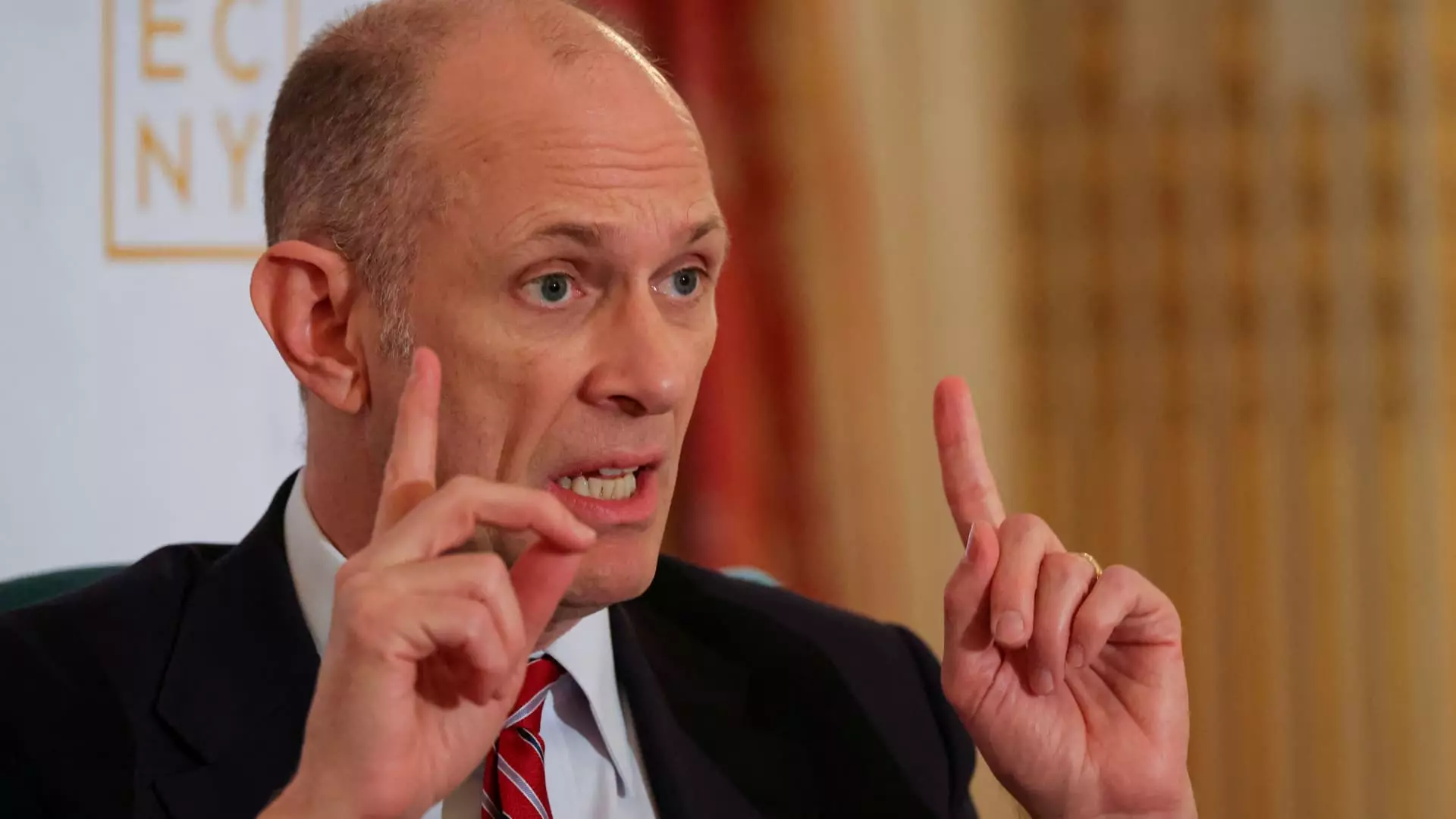As President Donald Trump reignites his trade war rhetoric, the potential fallout from his latest tariff threats has sent shockwaves through the financial sector. Austan Goolsbee, President of the Chicago Federal Reserve, expressed concerns that Trump’s aggressive trade measures are complicating monetary policy. These tariff escalations, notably a proposed 50% tax on products from the European Union and a hefty 25% tax on iPhones not manufactured in the U.S., present a unique blend of challenges for economic policymakers navigating the unpredictable landscape.
Understanding the implications of these tariffs requires us to delve deeper into the complexities surrounding inflation and employment rates. Goolsbee’s observations underscore an uncomfortable reality: when tariffs are invoked, they can inadvertently trigger stagflation, a toxic combination of stagnant economic growth coupled with rising prices—a nightmare scenario for any central bank.
Staying on the Sidelines: The Fed’s Cautious Approach
In his recent CNBC interview, Goolsbee outlined the cautious stance adopted by the Federal Reserve amid these tumultuous developments. He emphasized that while interest rates may ultimately trend downward, the current climate necessitates a more circumspect approach to policy-making. With uncertainties stemming from trade policies increasingly complicating projections, it’s evident that the Fed is reluctant to commit to definitive changes in interest rates without further clarity on the economic landscape.
Goolsbee’s comments reflect a growing apprehension among central bankers about engaging too deeply in fiscal and trade policy debates, which are outside their formal purview. Still, the influence of these external factors on the economy compels them to consider their repercussions diligently. The grave nature of inflation fears looms large, leaving many investors and citizens feeling vulnerable in an environment that should ideally inspire economic confidence.
Market Reactions: Volatility and Investor Sentiment
Trump’s abrupt trade announcements have notoriously stirred anxiety in the stock markets. Goolsbee noted that while the immediate effect of a price hike on iPhones might seem minor, it is the broader implications on consumer sentiment that can rattle markets. The unsettling reality is that fiscal irritants like these are characteristic of an administration that has shown a penchant for unpredictable economic maneuvers.
In an age where investments are influenced heavily by sentiment, the uncertainty of fiscal policies translates into a pivotal reckoning for investors who fear the ramifications of heightened tariffs on their portfolios. Investors are already on edge, as bond yield fluctuations signal an uneasiness that belies a stable economy. Trump’s fluctuating rhetoric casts doubt not just on individual products but on the broader economic framework that many rely on for stability.
Hope Amidst Uncertainty: A Vision for Economic Growth
Despite the tumult, Goolsbee’s outlook isn’t entirely bleak. His optimism centers around the belief that, absent these trade tensions, the economy was showing signs of robust growth. There was a nuanced recognition of the pivotal role the Federal Reserve plays, but he remained adamant about maintaining flexibility in decision-making across upcoming meetings.
His acknowledgment that conditions would need to align—including achieving stable full employment and bringing inflation back to the Fed’s target of 2%—reveals an openness to future downgrades in interest rates. This perspective resonates with many who argue for more proactive fiscal policies to stimulate growth rather than relying on protectionist measures that primarily serve to create a shield but can also suffocate innovation.
Ultimately, Goolsbee’s cautious but hopeful approach highlights a critical interface between targeted economic policies and the prevailing attitudes of political leadership. The Fed’s elasticity in the face of trade disruptions is indicative of a broader need to cultivate policies that reinforce long-term growth rather than those that merely respond to temporary pressures and crises.

